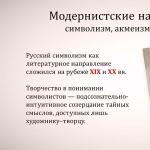Volume formula necessary to calculate the parameters and characteristics of a geometric figure.
Figure volume- This quantitative characteristic space occupied by a body or substance. In the simplest cases, volume is measured by the number of unit cubes that fit in the body, that is, cubes with an edge equal to a unit length. The volume of the body or the capacity of the vessel is determined by its shape and linear dimensions.
| Figure | Formula | Drawing |
|---|---|---|
|
Parallelepiped. Volume of a rectangular parallelepiped |
||
|
Cylinder. Cylinder volume equal to the product base area to height. The volume of the cylinder is equal to the product of pi (3.1415) by the square of the radius of the base and the height. |
|
|
|
Pyramid. The volume of the pyramid is equal to one third of the product of the area of the base S (ABCDE) and the height h (OS). |
|
|
|
Correct pyramid is a pyramid, at the base of which lies regular polygon, and the height passes through the center of the inscribed circle at the base. |
|
|
|
Regular triangular pyramid is a pyramid whose base is an equilateral triangle and its sides are equal isosceles triangles. |
|
|
|
Regular quadrangular pyramid is a pyramid whose base is a square and its sides are equal isosceles triangles. |
|
|
|
Tetrahedron is a pyramid whose all faces are equilateral triangles. |
V = (a 3 √2)/12 |
|
|
Truncated pyramid. The volume of a truncated pyramid is equal to one third of the product of the height h (OS) by the sum of the areas of the upper base S 1 (abcde), the lower base of the truncated pyramid S 2 (ABCDE) and the average proportional between them. |
V= 1/3 h (S 1 + √S 1 S 2 + S 2) |
|
|
It is easy to calculate the volume of a cube - you need to multiply the length, width and height. Since a cube has a length equal to its width and equal to its height, the volume of the cube is equal to s 3 . |
||
|
Cone is a body in Euclidean space obtained by combining all rays emanating from one point (the vertex of the cone) and passing through a flat surface. |
||
|
Frustum it will work if you draw a section in the cone parallel to the base. |
V = 1/3 πh (R 2 + Rr + r 2) |
|
|
The volume of the sphere is one and a half times less than the volume of the cylinder circumscribed around it. |
||
|
Prism. The volume of a prism is equal to the product of the area of the base of the prism and its height. |
– a free geometric calculator will help you calculate the area or volume of relatively simple geometric shapes in two clicks. No need to search necessary formulas and make calculations on a piece of paper. Working with the program is very simple; first you need to choose what you want to calculate: the area of the figure, the total surface area or the volume. The selected figure is displayed next to it in the window, and next to it the formula for calculating the desired value will be shown. Initially, all results are rounded to the whole part, but it is possible to change and select the required accuracy with which the results should be displayed. For this, options from one to ten decimal places are available.
What can be calculated?
- Circle – we find the circumference of a circle from a known radius, and the diameter from a known circle.
- We find the area of a circle, sector of a circle, ellipse, square, rectangle, parallelogram, triangle, trapezoid, rhombus, torus.
- Surface area - cube, prism, pyramid, cylinder, sphere, cone, torus.
- Volume of figures - cube, cuboid, prism, pyramid, cylinder, sphere, cone, torus, frustum, barrel
Geometric figures are closed sets of points on a plane or in space that are limited by a finite number of lines. They can be linear (1D), planar (2D) or spatial (3D).
Any body that has a shape is a collection of geometric shapes.
Any figure can be described by a mathematical formula of varying degrees of complexity. Starting from a simple mathematical expression to the sum of a series of mathematical expressions.
The main mathematical parameters of geometric figures are radii, lengths of sides or edges and angles between them.
Below are the basic geometric figures most often used in applied calculations, formulas and links to calculation programs.
Linear geometric shapes
1. PointA point is the basic measurement object. The main and only mathematical characteristic of a point is its coordinate.
2. Line
A line is a thin spatial object having a finite length and representing a chain related friend with friend points. The main mathematical characteristic of a line is its length.

A ray is a thin spatial object of infinite length and representing a chain of points connected to each other. The main mathematical characteristics of the ray are the coordinate of its origin and direction.

Flat geometric shapes
1. CircleA circle is a geometric locus of points on a plane, the distance from which to its center does not exceed a given number, called the radius of this circle. The main mathematical characteristic of a circle is its radius.

2. Square
A square is a quadrilateral in which all angles and all sides are equal. The main mathematical characteristic of a square is the length of its side.

3. Rectangle
A rectangle is a quadrilateral whose angles are all 90 degrees (right). The main mathematical characteristics of a rectangle are the lengths of its sides.

4. Triangle
A triangle is a geometric figure formed by three segments that connect three points (vertices of the triangle) that do not lie on the same straight line. The main mathematical characteristics of a triangle are the lengths of the sides and height.

5. Trapezoid
A trapezoid is a quadrilateral in which two sides are parallel and the other two sides are not parallel. The main mathematical characteristics of a trapezoid are the lengths of the sides and height.

6. Parallelogram
A parallelogram is a quadrilateral whose opposite sides are parallel. The main mathematical characteristics of a parallelogram are the lengths of its sides and height. 
A rhombus is a quadrilateral that has all sides, but the angles of its vertices are not equal to 90 degrees. The main mathematical characteristics of a rhombus are the length of its side and its height.

8. Ellipse
An ellipse is a closed curve on a plane, which can be represented as an orthogonal projection of a section of the circumference of a cylinder onto a plane. The main mathematical characteristics of a circle are the length of its semi-axes.

Volumetric geometric shapes
1. BallThe ball is geometric body, which is a collection of all points in space located from its center at a given distance. The main mathematical characteristic of a ball is its radius.

A sphere is the shell of a geometric body, which is a collection of all points in space located at a given distance from its center. The main mathematical characteristic of a sphere is its radius.

A cube is a geometric body that is a regular polyhedron, each face of which is a square. The main mathematical characteristic of a cube is the length of its edge.

4. Parallelepiped
A parallelepiped is a geometric body, which is a polyhedron with six faces and each of them is a rectangle. The main mathematical characteristics of a parallelepiped are the lengths of its edges.

5. Prism
A prism is a polyhedron, two of whose faces are equal polygons lying in parallel planes, and the remaining faces are parallelograms having common sides with these polygons. The main mathematical characteristics of a prism are the base area and height.

A cone is a geometric figure obtained by combining all the rays emanating from one vertex of the cone and passing through a flat surface. The main mathematical characteristics of a cone are the radius of the base and the height.

7. Pyramid
A pyramid is a polyhedron whose base is an arbitrary polygon, and the side faces are triangles that have a common vertex. The main mathematical characteristics of a pyramid are the base area and height.

8. Cylinder
A cylinder is a geometric figure bounded by a cylindrical surface and two parallel planes intersecting it. The main mathematical characteristics of a cylinder are the base radius and height.

You can quickly perform these simple mathematical operations using our online programs. To do this, enter the initial value in the appropriate field and click the button.
This page presents all the geometric figures that are most often found in geometry to represent an object or part of it on a plane or in space.












